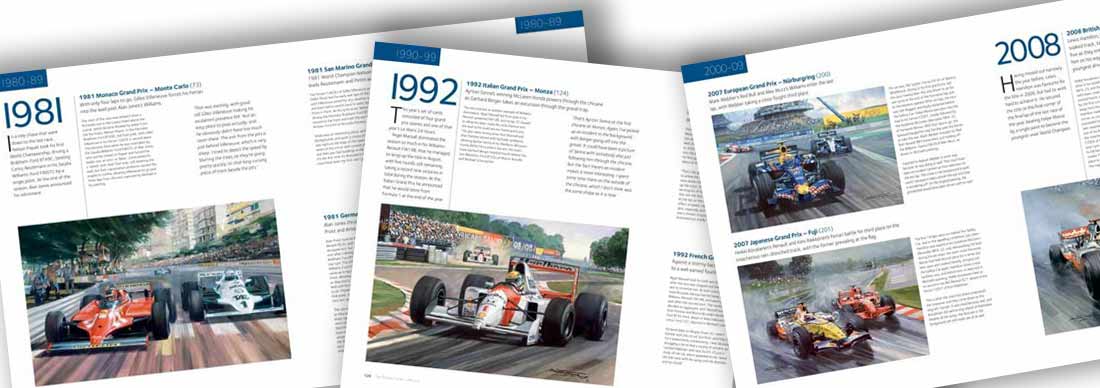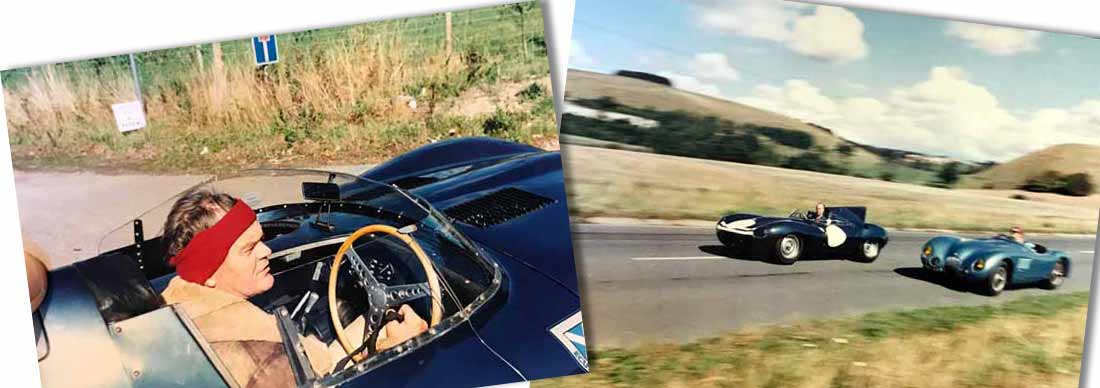
Busy times with Ecurie Ecosse
On 7 April 1954, XKC 051, XKC 052 and XKC 053 were sold to Ecurie Ecosse. The three cars were registered in Edinburgh the same month, becoming, respectively, LSF 420, LFS 672 and LFS 671. They were painted in the team’s Flag Metallic Blue colours with identifying transverse white stripes across the nose - three for 051, two for 053 and one for 052.

During its time with Ecurie Ecosse, XKC 051 received modification to the rear suspension with the welding of brackets to the axle casing in an attempt to improve its location. Another modification was the addition of an oil cooler.
Ecurie Ecosse - literally ‘Team Scotland’ - was born out of Edinburgh based Merchiston Motors, a company formed by David Murray and Walter ‘Wilkie’ Wilkinson. The pair had met when Wilkinson was working at Reg Parnell’s Highfield Garage in Derby and Murray had come to them in 1949 to look after his racing cars, becoming part of their racing team. When ‘Wilkie’ decided to leave Highfield, Murray suggested that he prepare his Maserati for the rest of the 1949 season and then go into partnership with him running a business in Edinburgh.
Murray was a chartered accountant, with an office in Rutland Square, Edinburgh, but he was also a wine importer and owned three pubs in Edinburgh’s Royal Mile. He had a lock-up in Merchiston Mews where he kept his racing cars and it was here that he and Wilkinson established Merchiston Motors, basing it in the premises of a Rolls-Royce repairer that had gone bankrupt.
The pair gradually built up the business with Wilkinson working full-time to tune and maintain the cars and employing three mechanics. One of them, Stan Sproat, was a Scot, and the other two, Australian Ron Gaudion and Irishman Pat Meehan, had previously worked at Jaguar.
Murray continued to race his Maserati, taking in a number of events throughout the 1950 and 1951 seasons, and Jaguar XK 120s were also prepared for customers Ian Stewart and Bill Dobson. It occurred to Wilkinson that, ‘If Ian Stewart and Bill Dobson could form themselves into a team, and find a third driver with an identical car, then they could cut costs through having a common pool of spares and earn more prize money by competing for team prizes.’ Sir James Scott Douglas stepped forward as a third driver and, with some financial backing from Esso, the team was born.
They came up with the name Ecurie Ecosse and the team was officially announced on 11 January 1952. Ecurie Ecosse went on to become one of the most successful and well-known independent racing teams of all time.
The first appearance was at Charterhall in Berwickshire on 6 April 1952 and Dobson won the unlimited scratch race from Stewart. The team continued to enjoy success throughout the season, Stewart acquiring a C-type to replace his XK 120 and beating Stirling Moss in the works car at Charterhall at the end of the year.

For the 1953 season, Ecurie Ecosse ran four C-type Jaguars, a Cooper-Bristol and a Connaught. After Dobson retired from racing, Jimmy Stewart - elder brother of future World Champion Jackie - and Ninian Sanderson both joined. By now the team was competing in major sportscar events at circuits such as Reims, Spa and the Nurburgring. Between 1952 and 1954, it also competed in three British Grands Prix, the best result being 14th in the 1954 event, with Leslie Thorne at the wheel. However, Murray, who by now had given up driving himself, soon decided to abandon Formula 1 and concentrate purely on sports cars.
In 1954, the works Jaguar team had its brand-new D-types and Ecurie Ecosse was able to acquire the ex-works C-types for the season, racing them with considerable success, albeit mainly on home soil that year. For 1955 the team graduated to D-types, but initially suffered problems with the disc brakes. At the Nurburgring, Desmond Titterington, who by now was driving for the team, crashed and broke his collar bone.

For the 1956 season Ron Flockhart joined the team, the other drivers now being Sanderson, Titterington and Jock Lawrence. Sanderson took victory in the Spa Grand Prix before the team headed for Le Mans, with a single entry for Flockhart and Sanderson. It was the first time Ecurie Ecosse had competed there and, according to Wilkinson, the strategy was consistency. The drivers were instructed not to be drawn into any dices with other competitors, each being given a target speed to aim at. Their main competitor was the Aston Martin DB3S of Stirling Moss and Peter Collins, with whom they swapped the lead for most of the race. Flockhart and Sanderson emerged with victory by only a lap after 24 hours of hard racing.
In October 1956, Jaguar announced its withdrawal from racing and offered that season’s three works D-types to Ecurie Ecosse. The team sold its 1956 Le Mans winner to help raise funds and returned for a second stab at the French classic in 1957, achieving a magnificent 1-2 finish, Ron Flockhart/lvor Bueb leading home Ninian Sanderson/Jock Lawrence. These were really the glory days for the team and, despite continuing to compete until 1971, it never enjoyed the same level of success again.
By Chas Parker & Philip Porter
Other articles by Philip Porter






Leave a comment
This site is protected by hCaptcha and the hCaptcha Privacy Policy and Terms of Service apply.